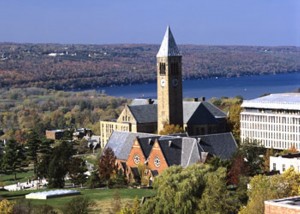Questions on Gas Industry – EDF Methane Leakage Study
.
Note: David Allen et al. of the University of Texas have a paper in the most recent Proceedings of the National Academy of Sciences entitled “Measurements of methane emissions at natural gas production sites in the United States.” Professor Howarth, along with R. Santoro and A. Ingraffea had published “Methane and the greenhouse gas footprint of natural gas from shale formation” in Climate Change at 106:679-690 back in 2011.
This excerpt of the Press Release from Professor Howarth is as follows:
A major call from our April 2011 paper was for direct measurements of methane emissions by independent scientists. Amazingly, few such studies had been conducted over the preceding decades, and most of the extremely-limited available information was coming from industry sources, usually unverified and undocumented. I am delighted to report that many scientists have taken up the challenge of measuring methane emissions in the short time since our paper came out 29 months ago.
The EDF and industry-funded study by David Allen and colleagues is one of these new studies. So far, I have only seen the preprint of their paper to be published soon, and I have not had access to any of the supporting on-line documents. But with that qualifier, I believe Allen et al. have done a fine job of characterizing emissions in the sites they have studied. Their conclusion is that upstream emissions are low, 0.42% of natural gas production (lower than we estimated for shale gas back in our April 2011 paper, and towards the low end of what we estimated for conventional natural gas).
This is good news. It suggests that the oil and gas industry – when sufficiently motivated – can produce natural gas with modestly low emissions. There are a couple of caveats, however.
First, this study is based only on evaluation of sites and times chosen by industry. The Environmental Defense Fund over the past year has repeatedly stated that only by working with industry could they and the Allen et al. team have access necessary to make their measurements. So this study must be viewed as a best-case scenario. Perhaps when industry is motivated, methane emissions can be kept to this relatively low level.
Second, many other scientists have proven over the past 2 years that you can measure methane emissions from gas development without industry cooperation, for instance by using aircraft to fly over operations. Many studies have now been published, and many more presented at national scientific meetings, on methane emissions using techniques which capture the emissions at regional scales and do not require industry permission to sample. The National Oceanic and Atmospheric Administration (NOAA) laboratory in Boulder, CO, has been a very important player in this work, but other labs including many academic institutions have also been pursuing this line of research. All of these studies are reporting upstream emission estimates that are 10- to 20-fold higher than those reported in this new paper by the Allen and colleagues. Most of these other estimates from NOAA and independent non-industry funded academics are in fact at the upper end of what we estimated in our April 2011 paper, or far higher. This should be truly alarming to anyone concerned about global climate change.
How can we explain this huge discrepancy? My take at the moment – again without access to the data sources and analysis behind the Allen et al. paper – is that the gas industry can produce gas with relatively low emissions, but they very often do not do so. They do better when they know they are being carefully watched. When measurements are made at sites the industry chooses and at times the industry allows, emissions are lower than the norm. But the norm may well be 10-fold or more higher, based on the other accumulating research by NOAA and other independent researchers.
A critical point: Allen and colleagues reported massive amounts of methane flared at the time right after shale gas wells were fracked. Flaring means the gas was burned, not vented to the atmosphere as methane. Were that gas vented as methane without flaring, the total emissions picture would have been far, far greater. Do the sites studied by Allen et al. with industry cooperation reflect the general practice? Will EPA rules promulgated over the past year or so to require flaring and not venting in the future be enforceable, given that venting is invisible, and flaring often draws community criticisms because of jet-like noise and flames extending hundreds of feet into the air for days? Unless society is willing to fund efforts to measure emissions at every well completion, a very expensive proposition, what is to keep less environmentally responsible companies from failing to follow the EPA rules and simply vent this invisible and incredibly climate-destructive methane gas?
Finally, methane emissions from upstream at the well sites is only part of the problem. Methane is also emitted as gas moves to consumers, and again new studies are indicating these emissions may be even larger than the 1.4 to 3.6% of lifetime well production we estimated in our April 2011 paper.
Professor Robert Howarth, Ph.D., Department of Ecology & Evolutionary Biology, Cornell University
See also: www.FrackCheckWV.net

